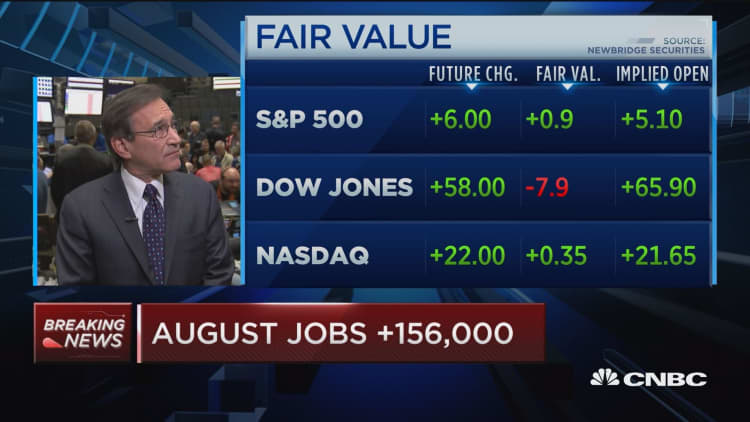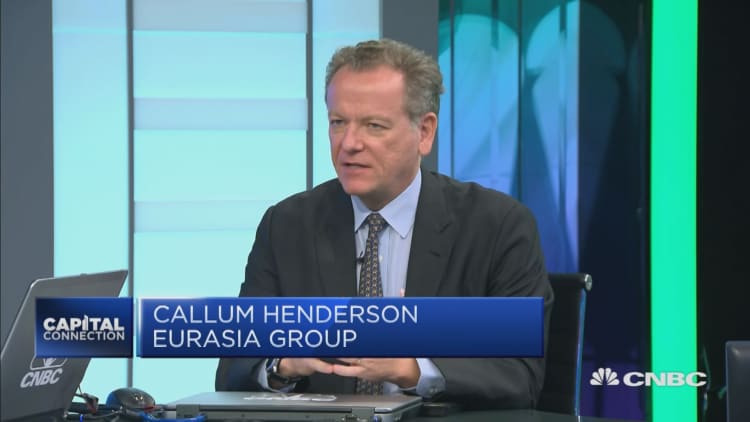
The Federal Reserve appears ready to accept that its inflation assessments have been wrong, indicating an important shift in how it will approach rate hikes ahead.
In a speech Tuesday, Fed Governor Lael Brainard said the long-standing assessment at the central bank that persistently low inflation is the result of transitory factors that eventually will pass does not add up considering current circumstances.
As a result, she said, policymakers should reconsider the current path they expect for future rate hikes.
"I am concerned that the recent low readings for inflation may be driven by depressed underlying inflation, which would imply a more persistent shortfall in inflation from our objective," Brainard told the Economic Club in New York. "In that case, it would be prudent to raise the federal funds rate more gradually."
Brainard's comments are important because she is considered a close ideological ally of Fed Chair Janet Yellen. While Yellen herself has indicated that the end of the rate-hiking cycle could be near, she and her fellow Federal Open Market Committee members have stood by the belief that inflation ultimately will gravitate toward their 2 percent target.
Tuesday's speech challenges that notion.
Specifically, Brainard pointed to the current low unemployment rate — 4.4 percent — and compared it to the last time the economy was around "full employment" from 2004 to 2007. During that run, inflation averaged about 2.2 percent. Currently, the three-year average is 1.5 percent.
Brainard acknowledged that certain factors driving down inflation, such as a drop in cellphone rates, are transitory. But she said there also are temporary factors pushing up inflation, such as a rise in prescription drug prices.
"What is troubling is five straight years in which inflation fell short of our target despite a sharp improvement in resource utilization," she said.
At the core could be a general drop in "underlying" or long-term trend inflation that is feeding on itself and keeping the rate low, simply because that is what consumers have come to expect. Economists have long accepted the notion that inflation can stay high or low simply because of public perceptions.
"Households and firms have experienced a prolonged period of inflation below our objective, and that may be affecting their perception of underlying inflation," Brainard said. "In short, frequent or extended periods of low inflation run the risk of pulling down private-sector inflation expectations."
The Fed has hiked its benchmark rate four times since December 2015 and was on target for one more before year's end. Traders in the fed funds futures market, though, have shifted expectations and now don't expect the next rate hike until at least June.
Brainard said the Fed should follow through on its intentions to begin reducing its $4.5 trillion balance sheet of bonds that it acquired mostly during stimulus efforts that started during the financial crisis.
But she believes it should tread carefully when it comes to future rate hikes.
If her sentiments reflect the majority of FOMC members, the shift could pull the Fed away from the majority's preference for slow but steady rate hikes and more toward the sentiment expressed by Minneapolis Fed President Neel Kashkari and some economists who believe rate hikes should wait until inflation becomes more pronounced.
In fact, Brainard said the Fed should consider letting inflation run "modestly above" the 2 percent goal before hiking again.
"I will be looking closely at the evolution of inflation before making a determination about further adjustments to the federal funds rate," she said. "We have been falling short of our inflation objective not just in the past year, but over a longer period as well. My own view is that we should be cautious about tightening policy further until we are confident inflation is on track to achieve our target."
WATCH: Explaining how rate hikes and balance sheet reduction will coexist.



